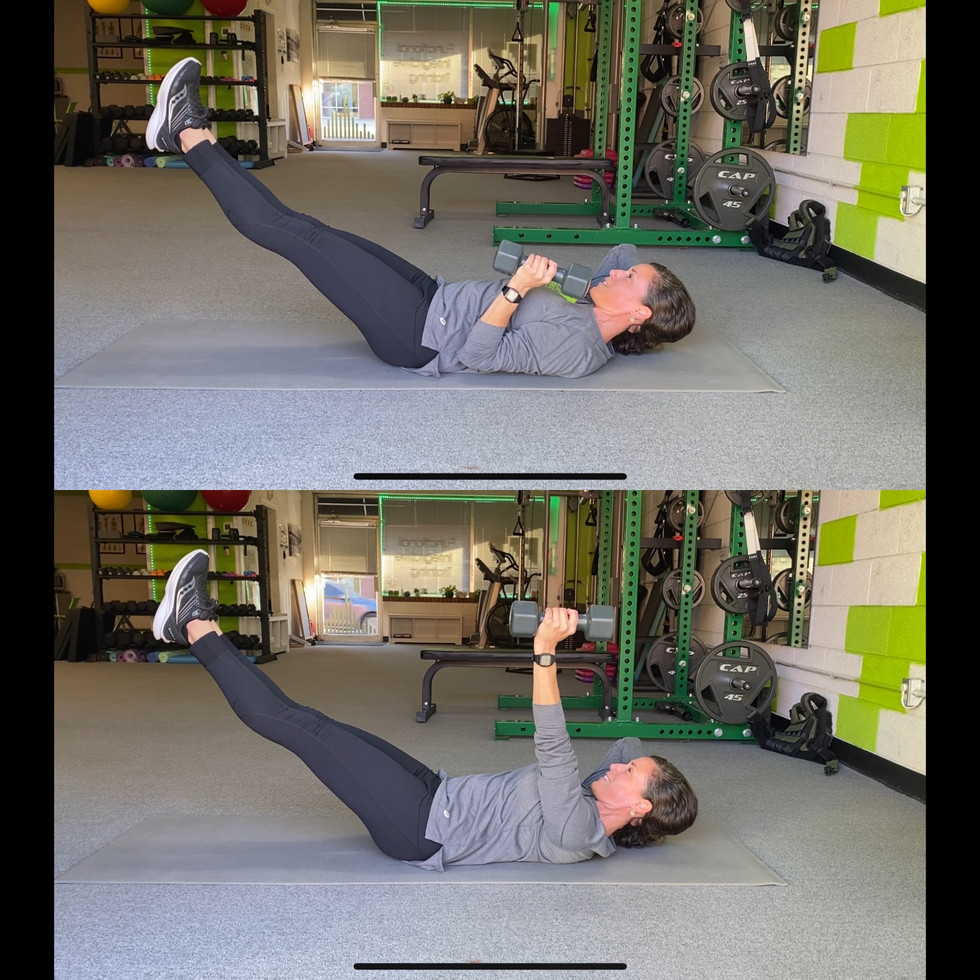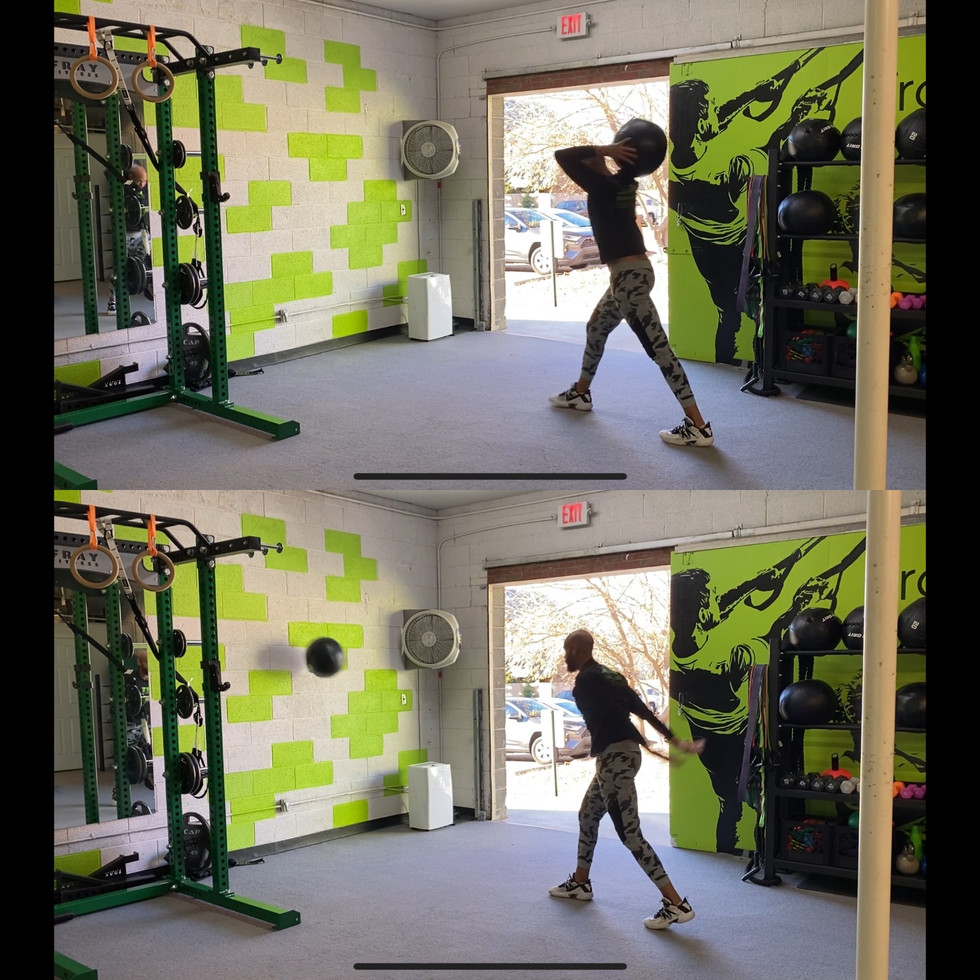Getting to the Core
- Lauren Stewart

- Nov 17, 2022
- 5 min read
Happy Planksgiving! It’s that time of year again… time to talk about our CORE muscles and of course PLANKS.
In this article, Lauren will talk about the core muscles, the history of the plank, the difference between stability, strength, and power, and some exercises for each of those categories that you can try on your own or with your friend or trainer at the gym.

Part 1 - The Core Muscles
Most fitness programs today include a component of core training. You’ll certainly hear all the trainers at FIT Carrboro talking about training your core. But what actually is it?
The American Council on Exercise says that “the major muscles that move, support and stabilize your spine are called the muscles of the core or trunk.” This includes nearly 30 different muscles! No wonder we talk about it a lot. I would argue that there are virtually no exercises that can be properly performed without the use of at least a few core muscles, the least of which includes using your diaphragm for taking a simple breath, for instance.

When you flex your spine forward, like bending over or doing a crunch, you are using your Rectus Abdominus muscle, or as some people call it, the "six-pack." This muscle is closest to the skin, so it usually gets the most chatter, as it is seen in people who have a very low body fat percentage.

When you extend your spine backward, like standing up straight, leaning back or doing a cobra stretch, you use your Erector Spinae muscles. These run all up and down the spine and are a group of muscles, not just one.

When you twist to the left and right, you use your Internal Obliques and External Obliques - yes, there are two layers! You also use these when you bend over laterally to one side, like a teapot. Notice how they attach to each rib! That means... they are dynamically involved with breathing, too.

Two other muscles are primarily responsible for stabilizing. Your Multifidus is on the backside close to your back bones, and its main job is to hold your spine stable during movement. Your Transverse Abdominus is the deepest layer of core muscle, and wraps all the way around your torso, compressing the contents of your abdomen and bringing your belly button in toward your spine.

(Transverse Abdominus, above)
While those are the main core muscles, I also like to include several other muscles, as they play a major role in stabilizing your spine, ribs, and pelvis: Diaphragm, Pelvic Floor muscles, Glutes, Hamstrings, Iliacus, Psoas, Quadratus Lumborum, Rectus Femoris, Latissimus Dorsi, Transversospinalis, Serratus Anterior and Serratus Posterior, Upper Trapezius and Lower Trapezius, Piriformis, and others.
https://www.jptrs.org/journal/view.html?doi=10.14474/ptrs.2016.5.1.29
Part 2 - The Plank Exercise
How long can you hold a plank? Why should you try it? Why does anyone do it? Let's dig into this a little bit more and talk about Gayle's favorite exercise!
No one really can say where the plank truly originated... But here's the general recent timeline...
1920s - Joseph Pilates created The Pilates Method and implemented a straight arm plank with knee pulls as a strength based core exercise for spinal alignment and total body strength
1939/40 - Physiologist Royal H. Burpee invented the burpee exercise for his doctoral thesis, as a simple fitness test to measure agility and coordination. One phase of the burpee move involves being in a plank on your hands, just like in Pilates.
1940s - Planks were used as part of the fitness testing for recruits during WWII
1990s - Doctor of Physical Therapy Stuart McGill began implementing forearm planks along with side planks and hip bridges to help patients with back pain, and even began promoting his exercises in the personal training educational sphere.
2005 - Brian MacKenzie, a human performance specialist, created a full Performance Evaluation Testing protocol which included specific test parameters for the forearm plank.
2021 - Guinness World Records officially announce the world record for longest plank is by Daniel Scali for 9 hours, 30 minutes, 1 second
2022 - The longest plank held by a female is by Dana Glowacka at 4 hours, 19 minutes, 55 seconds
Part 3 - The Three Phases of Core Training
I like to think about training the core in three different phases - stability, strength, and power. Deciding where to focus is specific to your current abilities, your health and injury history, and your specific desired outcomes.
1. Core Stability
Core stability is the ability of your core muscles to maintain control of trunk movement, and keep your spinal column stable and still, as you move your limbs and other body parts.
Core stability is created by training the muscles in your trunk and pelvis to brace and hold strong, while maintaining breathing patterns, and also to be able to create varying amounts of abdominal pressures in response to specific demands.
Core stability makes balance, breathing, and movements in daily life easier.
Common Exercises: Plank, Side Plank with Reach, Reverse Plank, Quadruped or Bear Plank, Bird Dog, Bear Crawl, Supine Leg Drop, Hip Bridge, Marching Hip Bridge, Dead Bug, Standing Single Leg Deadlift, Airplane, etc....
Daily Life Example: You've bent over your low freezer drawer and are holding your torso in a horizontal position for 90 seconds as your arms are reaching out sorting through your freezer items, rummaging around until you find the bag of peas you were searching for.
2. Core Strength
Core Strength describes your ability to generate force, and/or your ability to generate force over time, making dynamic physical activities easier to perform and translating to better athletic movement. This phase can include both training the endurance of your core muscles as well as training for maximal force production of your core muscles.
By having a strong core, you can avoid excessive overload of your spine, improve your overall body posture, and make it easier for your body to transfer force from the lower body to the upper body and from the upper body to the lower body.
Common Exercises: Leg Raises, V-Ups, Hollow Hold with Chest Press, Hanging Knee Raises, Mountain Climber, Farmer Carry, Wood Chopper, Pikes, etc...
Daily Life Example: You've brought home a bunch of 40lb bags of mulch, and you are standing and turning to move them from the trunk of your car to the ground, bag by bag.
3. Core Power
Core Power is your ability to generate a maximal amount of force in the shortest amount of time. This phase of training is usually seen in athletic populations, training specific drills to apply to game-time performance-specific events. However, we can also use core power training in people who are trying to prevent tripping and falling, and also in conditioning workouts designed to elevate the heart rate with fast paced drills.
In power training, you apply all of your skills, combining appropriate trunk stability with strength and maintain those components while moving the rest of the body quickly and forcefully. The result is a smooth, quick, explosive full-body effort.
Common Exercises: Medicine Ball Slam, Soccer Ball Throw, Wall Ball, Sit Up and Throw
Daily Life Example: You're pitching a baseball to your cousin. You use your whole body to throw the perfect 90 mph fast ball :)






























Comments